
By Texas Observer Staff
Illustrations by John Jay Cabuay
From the March/April 2021 issue.
O
ne year into the COVID-19 pandemic, millions of Texans have now been infected. Hospitalizations surged past last summer’s record highs this winter. Tens of thousands have died. Vaccines brought new hope, then mounting frustration with the disorganized rollout. Through it all, ordinary Texans across the state have tried to keep themselves healthy, their loved ones safe, their families together. They’ve tried to survive. The pandemic has changed all of us in ways small, big, irreparable, and intertwined.
Last summer, we talked to nine Texans about their experiences with COVID-19. Now, we check back in with those folks—and hear from a few new ones—who have graciously shared their stories.
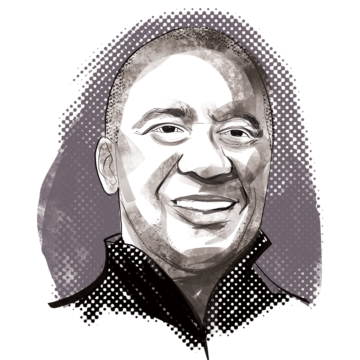
James T. Campbell
Location: Houston, Harris County
Profession: Communications Manager
Age: 65
James T. Campbell lost his father, James Cleophas Campbell, to COVID-19 last March, soon after the pandemic arrived in Texas, and just two weeks after the state’s first reported death. But his close-knit family got little time to mourn its 88-year-old patriarch before the coronavirus struck again. “First we lost my dad, then it took his brothers,” James T. says. His dad’s older brother, Johnny, died of COVID-19 in April. In December, the youngest brother, Percy, passed away from cancer. A month later, another family member died from COVID-19.
“I never knew 2020 would be the year of virtual funerals,” James T. says with a sigh. “I haven’t had a chance to mourn my dad, because I’ve been mourning other relatives.”
A former newspaper reporter, he now works for an insurance company. His wife, Lakshmi, works as a hospice physician. Because of her work, the couple recently qualified to get the Pfizer vaccine.
But James T. still worries about his widowed mother. He and his sisters keep a close watch over Rosa Campbell, a retired nurse who turned 87 in January—a birthday her loved ones dared only celebrate over Zoom. Rosa is in the top high-risk groups. So far she has hesitated to get a COVID-19 vaccine.
James T. can’t fathom why some Texans refuse to wear masks and take other precautions, even as hundreds of thousands of people have died and cases again surged this winter. Back when his dad died, only a few experts knew the virus could be asymptomatic and was easily airborne. But, he says, there’s no excuse now not to stay home, avoid gatherings, and take all necessary preventive measures.
“It’s been made way too political,” he says. “The people who haven’t lost anybody don’t really get it. And maybe there are even people who have lost somebody and just pretend this is the flu. But if you ask the majority of the people who lost parents, uncles, they’ll say, ‘Protect yourself and the public as well.’”
One day soon, he believes, vaccines will be easily accessible nationwide, herd immunity will take hold, and the virus will loosen its grip. When that happens, it will be time to gather his father’s friends and kin to swap stories, to eat barbecue, and to properly celebrate the life of James C. Campbell.
But as the first anniversary of his father’s death approaches, he’s not yet ready. “We’re not planning anything soon, and we don’t think it would be a good idea to bring people together. Once everything gets done, we’re going to have a proper celebration of life.”
Whenever that happens, James T. hopes his mother will be there to enjoy the party.
In the meantime, he knows what James C. would say if he were still around: Keep your spirits up. “I’m sure he had some down days, my daddy, but you never knew it. Because he was always very optimistic about life. My dad used to always say, ‘As long as you’re above the dirt, you have an opportunity.’”—Lise Olsen
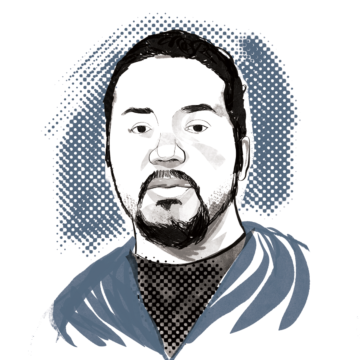
Michael Saenz
Location: Mount Pleasant, Titus County
Profession: Radiologic Technologist
Age: 36
Michael Saenz spent Christmas Eve talking to his wife and baby through a door in their Mount Pleasant home. Saenz had worried for months about bringing the coronavirus home to his family, as cases surged at the rural Northeast Texas hospital where he works. But after his wife and son were exposed to a family member who tested positive, the pair quarantined in a room in their house for a few days to avoid the risk of infecting Saenz, who nearly died of COVID-19 last May. Saenz spent more than a week on a ventilator when his son—born just days after the first coronavirus case was reported in Texas—was 2 months old. His wife, Saenz says, didn’t want to go through that again. Fortunately, their COVID-19 tests came back negative on Christmas Day, and with that, Saenz says the door flew open, reuniting the family.
It wasn’t until August that Saenz, who was 35 and healthy when he got sick last spring, began to feel back to normal. He has started working out again by lifting weights. But more than nine months after he got COVID-19, Saenz says he’s still not back to 100 percent. In January, he returned to a martial arts class that he used to frequent. “Let me tell you, I was very humbled that day. … I got my tail handed to me,” Saenz says with a laugh. “But it opened my eyes to where I was, where I am, and where I want to be.”
Since he returned to work at Titus Regional Medical Center in June, Saenz, an X-ray technician, has seen several COVID-19 surges at the 170-bed hospital. The biggest started around Thanksgiving and has continued into 2021. On New Year’s Eve, the hospital had to open a second ICU unit. As of mid-January, there were 24 people in the ICU with COVID-19, a record high, according to staff. That’s as other hospitals, nearby and across the state, filled up too, limiting patient transfers. And as hospitals in neighboring counties divert patients, it’s increased traffic to Mount Pleasant. People have waited in the emergency room at Titus Regional for hours, even days, for a room, according to the hospital. On a few occasions, ambulances sat on the entrance ramp for several hours before they could drop off patients because the ER was full. “It’s kind of scary just seeing every patient coming through with some symptoms of COVID,” Saenz says. “It’s been tiring. It’s been tiring and rough on my co-workers.”
Saenz says he and his colleagues try to conserve personal protective equipment by waiting for a patient’s COVID-19 test results to come back before entering their room, rather than use it for a negative case. But the most limited resource, like in rural hospitals across the state, is medical staff: The week of Christmas, four of his co-workers had COVID-19 and had to quarantine, “so we were pretty much a skeleton crew,” Saenz says. “Running all over the place.”
Meanwhile, Titus Regional, like other rural hospitals in Texas, was left out of the state’s first round of vaccine distribution in mid-December. About a week later, 700 doses of the Moderna vaccine arrived at the hospital and were distributed over the weeks of Christmas and New Year’s, right around when Saenz’s family had their COVID-19 scare. That gave him the extra motivation to get it as soon as he could. He received his first dose two days before New Year’s.—Sophie Novack

Lauren Byrd-Moreno
Location: Beaumont, Jefferson County
Profession: Student
Age: 28
Lauren Byrd-Moreno feels as though she’s been watching a train wreck since the early days of the pandemic. Her husband, Christopher Crain, is incarcerated in the Clemens Unit in Brazoria County. Byrd-Moreno, who lives more than a two-hour drive away in Beaumont, hasn’t been allowed to see him in more than a year because of coronavirus restrictions, and she’s lost count of how many times she’s been cut off from all contact due to prison lockdowns.
This winter, Byrd-Moreno hoped that Crain would be released on parole, though he’s been denied before, despite going through several educational and faith-based programs. This, as COVID-19 has spread through Texas prisons. In late fall, as the flu season threatened to strain the unit’s health care system, prison officials at Clemens started offering incentives like free commissary items for inmates who volunteered to take a flu shot. Byrd-Moreno has also been following news about the coronavirus vaccine rollout, but she’s skeptical that incarcerated people like Crain will receive shots soon.“It’s emotionally exhausting,” she says. “It’s like we’re standing and screaming for help, because our loved ones are in front of a moving train—but nothing is coming.”
Meanwhile, Byrd-Moreno is juggling life as a working mom, looking after six kids attending a mix of in-person and virtual school, all while she takes college classes online. It’s difficult seeing her kids miss out on being with their friends at school, and she says they’re “going insane wondering if [their father] will come home.”
For a few months, Byrd-Moreno was able to stay home with her family, collecting unemployment checks while the IHOP where she waitresses was closed. She’s been back at the restaurant intermittently since it reopened in the summer, but measures like plexiglass partitions between the booths and single-serving containers of pancake syrup haven’t been enough to keep the staff safe. “We kept having to get tested over and over,” she says. “I kept working with people and finding out they were positive the next day.”
The holidays weren’t a bright spot, either. Her aunt, who is on dialysis, tested positive for COVID-19 right before Thanksgiving. Besides helping her get to and from dialysis appointments while sick, the family didn’t get together. And on Christmas, Byrd-Moreno worked at IHOP, hoping that she wouldn’t catch the virus and bring it home to her kids. “Everything is building up,” Byrd-Moreno says. “Everyone’s threshold for what we can handle, we’ve all met that. We want to go back to normal, to pretend it’s not really happening anymore. But it’s still very much happening.”—Amal Ahmed
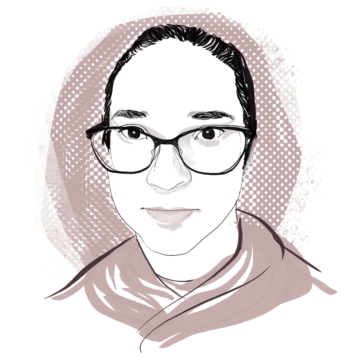
Erin Tolman
Location: Arlington, Tarrant County
Profession: Teacher
Age: 33
Every day, Erin Tolman experiences both sides of the in-person and remote learning divide. A parent of two kids ages 9 and 13, Tolman decided to keep them home this year out of concern that their small school district nearby wasn’t taking adequate COVID-19 safety precautions. Beginning in late September, though, Tolman, who teaches remedial math and a health science course at the larger Arlington ISD, was required to return to work in person. About half of her students are coming to school and half are logging on from home—she juggles teaching both groups at once.
Each morning, she wakes up and situates her son and daughter at their desks in the living room, where the family has set up a kind of makeshift classroom. Then she leaves for her classroom. It works, she says, because her husband, a home health aide, works nights and is home during the day with the kids. While he sleeps, the siblings monitor each other.
Tolman says she feels comfortable enough with her school district’s more rigorous COVID-19 cleaning and safety measures. There have been positive cases among teachers at her school, but they haven’t had to shut down yet for lack of staff. But even small adjustments are challenging: They wear masks, there’s no hands-on learning, and she tenses up anytime a student comes near her desk. She has to remind her middle schoolers of the new rules: Always sit at the same desk in class for contact tracing; don’t turn around; always walk in the same direction in the hallways to prevent traffic jams, even if it makes your route longer.
The most difficult part of the job is trying to hold onto students at home who are struggling. When there is a coronavirus exposure in their family, children attending school in person have to quarantine at home for a couple weeks. In some cases, Tolman says, a student’s grandmother lives with them and the parents don’t want to risk her getting infected, even if it means the child being less successful in school. Tolman understands: As a parent, she’s trying to balance the same thing. But “as a teacher, it’s really hard for me because sometimes I want these kids to come in person because I think I can make them sit there and do their work and they can ask me questions.” Virtually, she says, “I just don’t have as much control over helping them. And that’s hard for me, to not be able to help students the way I want to. I want to do more for them.”
Tolman says the fail rate among her students has increased significantly, and it’s mostly among kids who are virtual. In one case, she says, a student hasn’t logged on in more than a month. She’ll call and text reminders, but it hasn’t worked. “I’m trying everything,” Tolman says. “That is something that definitely we’re seeing this year, are kids falling through the cracks. The kids that are homeless, that don’t have a stable home—being virtual is very hard for them. As a parent, that breaks my heart, and as a teacher, it breaks my heart.”
Online learning has been difficult for Tolman’s own kids, who each have disabilities and need individual attention. But she is able to step in, monitor their schoolwork, and talk to their teachers. Some families don’t or can’t. It’s left parents in an impossible situation: “Safety is more important right now than education, for some people. They’d rather their kids repeat a grade than die from COVID, and I completely understand that,” she says. “It’s hard for me as a parent to decide what’s more important: your health or your education. That’s really, really hard, but a lot of parents are making that choice this year.”
Tolman says she and her husband have tried to find new activities they can do together, like walking to get the mail or taking a bike ride. But she says her anxiety around the virus has put a strain on their relationship. Church, which was once a source of community and calm for Tolman, is off the table: Masks aren’t required and many people don’t wear them.
As cases surged this winter, Tolman felt the virus coming closer and closer to home. Her younger sister got COVID-19 and had symptoms for months. Her husband’s uncle went to the ICU. But she feels lucky her family hasn’t lost anyone. In January, her husband, who’s diabetic and survived a heart attack last year, was able to get the vaccine. Tolman was ecstatic. “There’s hope for me now that he’s going to live to see his birthday next month,” she says. “There’s hope that we’re all going to make it through this year, when I know so many people that not everyone in their family has.”—Sophie Novack
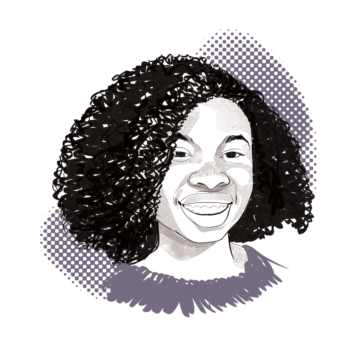
Victoria Randall
Location: College Station, Brazos County
Profession: Logistics Administrator
Age: 24
After graduating from college three years ago, Victoria Randall hopped around the country, from Boston to Sacramento, before moving to Dallas in late 2019 in search of cheaper rent and a good job. Within a few months, she landed a job as a marketing coordinator for a Texas-based restaurant chain. She loved the work and the stability it brought her. Soon, Randall was able to move into her own apartment and finally able to afford care for a range of medical needs, including anxiety and depression. Her plan to pay off her student loans and credit card debt by the time she turned 30 began to look doable. She even started scrolling through local animal shelter websites, looking to adopt a cat.
Then the pandemic hit Texas, and her new life unraveled. When she got a call from her boss on March 20, she knew what was coming: “I was like, ‘This is it. I’ve lost my job.’” With COVID-19 slowing business, the company could no longer afford to keep her on, her boss said.
That night, she filed an unemployment claim with the Texas Workforce Commission (TWC), beginning a long and harrowing saga with the overburdened unemployment insurance system. Her initial claim was denied, and Randall spent all of April holed up alone in her apartment, trying to get someone at TWC to assist with her claim. “I’m hearing one thing and being told something completely different. No one is helping me. I feel very desperate and alone,” Randall said at the time. Her mental health worsened. She felt more and more isolated. News about the coronavirus or the unemployment system would often send her into a panic attack.
She applied to more than a dozen jobs that month and never heard back. Without unemployment aid, she quickly burned through her savings. As May approached, she worried she wouldn’t be able to pay rent.
Panicked and alone, Randall felt as though this new city, and her new home, were closing in on her. “I love it here but now feel trapped,” she said. She stuffed her belongings into her car and traveled three hours south to College Station, where a friend’s family had offered to let her stay for free.
It cost her nearly $2,000 just to break her apartment lease, but things gradually got better. No longer isolated, her mental health improved. In June, she finally got through to someone at TWC and qualified for about $3,800 in backdated pandemic assistance payments. She worked a couple of jobs for temp agencies and relied on intermittent unemployment payments in between. Her second temp gig turned permanent in November, when she landed a position as a logistics administrator for an internet hardware supplier. The job doesn’t pay nearly as much as her old one, and it’s not in the marketing field, but still, it pays the bills.
But her TWC troubles reemerged in December, when she received a notice that she needed to pay the state back $1,400 in overpaid benefits. Randall doesn’t have that kind of money—a lot of the benefit payments she received went toward medical expenses—so she filed an appeal. But she was told it could take up to 12 weeks before she could expect a call about her case.
Randall feels a world away from where she was last February, when she had a nascent career in marketing, a home of her own, and a growing sense of financial security. The path back is unclear. “I’m almost 25. I want to hold myself up. And I was holding myself up before the pandemic. I was independent independent,” Randall says. “People are like, ‘You’re young. You should have a five- or 10-year plan.’ I don’t know what that is. I could have told you that [last] February. Now I don’t even know what I’m going to be doing a year from now.” —Justin Miller
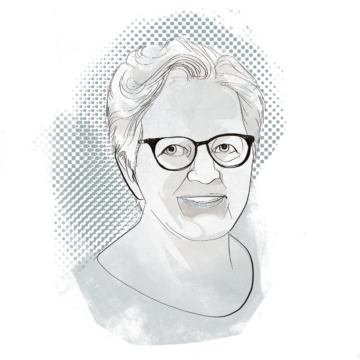
Betty Gibson
Location: Wichita Falls, Wichita County
Profession: Retired Bookkeeper
Age: 82
Betty Gibson has tried to stay busy this past year caring for her three dogs and whipping up meals for herself. Out of habit, she tends to cook enough food for a family of five, so her nearby friends are frequent beneficiaries of her fresh-baked bread and hearty soups.
If ever there were a poster child for pandemic prudence, it’d be Gibson, an 82-year-old great-grandmother who has eschewed most human contact since last March in the interest of her, and others’, health. Gibson, who has a pacemaker, made it to a regular appointment at her cardiologist in November, but skipped a dentist visit out of an abundance of caution. She relishes a trip to the hairdresser but has had just one haircut since the pandemic began—a rare moment of normalcy last June. She hasn’t seen most of her family, whom she used to visit with every few days, in nearly a year. She orders her groceries online and picks them up curbside.
In early November, Gibson relented, allowing one of her granddaughters and her granddaughter’s husband, along with their two girls, to visit her Wichita Falls home. They sat spaced apart in the living room and talked for a while. The younger great-grandchild “was just chattering away,” Gibson says. “It was just a delightful little visit.” But unbeknownst to Gibson—or the rest of her family—they had been in contact with an infected family member just days before seeing her. Fortunately, she didn’t get sick. But she didn’t risk it again for Thanksgiving or Christmas. This was the first holiday season she had ever been apart from her family.
Gibson’s worries were magnified recently by the loss of a close family friend who lived on a farm near her hometown of Crowell who died from COVID-19 complications. It’s hard to reconcile her friend’s death with the seeming nonchalance of so many. “I know some of it is people think it’s not real or something, and so they just ignore the fact that there is such a thing as COVID-19 and live their lives like there isn’t,” she says. “And that’s one big reason I think we’re in the pickle we’re in right now.”
For the past few months, Gibson has eagerly waited to get the COVID-19 vaccine. She signed up to be on four different vaccination lists in December: one at her primary care physician’s office, one at the city health department, one at the pharmacy at the United Supermarket a few blocks from her home, and one at the hospital in Henrietta, a rural town 20 miles east. But more than a month later, none of the providers had contacted her to get vaccinated. When she calls them, “nobody seems to know what’s going on with distribution.”
“Tell you the truth, it is very frustrating,” Gibson says of the vaccine delays and the apparent lack of leadership. “The governor said people 65 and up—and I’m way up—could get it,” she says. “It’s kind of discouraging. We knew this was coming and it doesn’t seem like there was any planning that took place.
“I think of all the precautions I’ve taken since last March in trying to do the safest thing I could for myself and everybody else. And finally, you know, we got the vaccine way earlier than we actually thought. And I thought, what a great thing,” Gibson says. Now, it’s hard to remain optimistic. “I’m just trying to stay safe until I can get it,” she says. “Who knows whenever that may be.”—Christopher Collins
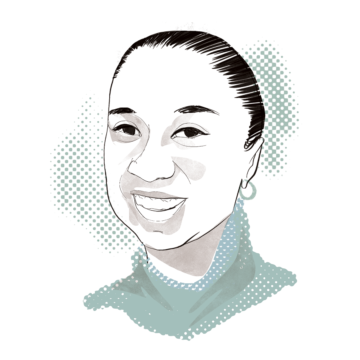
Karina Garcia
Location: Socorro, El Paso County
Profession: Student
Age: 37
Before the pandemic, Karina Garcia was working on her master’s in business administration and substitute teaching on the side. Her husband, Aaron Garcia, had a steady job at a construction company in El Paso. They’d purchased a home in 2015—a lifelong dream—in a quiet neighborhood of Socorro called Jardín de los Flores, or “flower garden.” “I thought we were the happiest family in the whole world,” she says.
But as the pandemic spread across Texas, the stresses started to pile up. By April, both Aaron and Karina were out of work and their two sons, ages 8 and 12, were home from school. As their money dwindled, the couple started fighting. After a confrontation in July, Aaron was charged with assault and taken to the El Paso County Jail. A month after he arrived there, he tested positive for COVID-19.
“It broke me down completely to the point of quitting everything,” Karina says. She failed a class and considered dropping out of school. She fell behind on bills. She couldn’t find a new job and didn’t qualify for unemployment benefits as a former contract worker. Unable to pay their mortgage, she worried that they would lose their home. The only thing that kept her family afloat was their benefits from the Supplemental Nutrition Assistance Program (SNAP), which helped Karina buy groceries. Karina, a military veteran, felt alone. “I was so close to depression,” she says. “I kept asking God, ‘Why me?’”
In the fall, she finally heard back from a counselor at the Texas Veterans Commission, who directed her to Texas RioGrande Legal Aid. Lawyers there told her to call the mortgage company and request forbearance, a delay or reduction in payments on their loan. The forbearance, which was granted and eventually extended until June of this year, gave her room to breathe. In October, she was hired part time by the U.S. Census Bureau; in early January, a second job came through with TurboTax. Her adviser at Park University helped her stay in her master’s program, and she’s now on track to graduate with an MBA in the spring of 2022.
In December, her husband was sent to Austin to complete a rehabilitation program, and Karina doesn’t know when he’ll be able to come home. She’s started worrying again about losing their home once their forbearance ends. Still, she’s trying to remain optimistic. “I needed to realize how important life is,” she says of the challenges of the last year. “I needed to see how beautiful it is to get up in the morning and see the sky and see the birds, being grateful that you got to open your eyes again.”—Megan Kimble
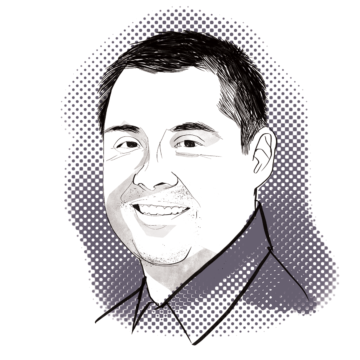
David Ceron
Location: McAllen, Hidalgo County
Profession: Author
Age: 44
David Ceron knows two versions of his mother: the person she was a year ago and the person she is now. The pandemic has changed her, deepening wrinkles, clouding her eyes, fogging her memory. “It’s only months that have passed by but it looks like years, and it’s hard to see older pictures of her where you can just tell it’s just a different person,” he says. Most difficult is when she asks about family members who have long since passed: How are David’s brother and sister doing? When are they coming to visit?
For the first seven months, the nursing home where Gregoria Ceron lives was closed to visitors. Family waved outside her window; David would wait in the parking lot of her dialysis clinic to see her for a few moments as she boarded the ambulance back to her nursing home. When Gregoria, who has diabetes, tested positive for COVID-19 in July, David thought he would lose her. About two years ago, she caught pneumonia and almost died. But she pulled through again last summer. “When she tested positive, I really thought, you know, that was it,” he says. “I’m never going to see my mom in person again.”
In the fall, the state loosened restrictions on nursing homes, and David and one of his sisters were able to begin visiting her in person. They alternate their visits, as one person is allowed at a time for exactly one hour, David says. They have to get tested for COVID-19 every two weeks and bring documentation of their negative results. That became especially stressful when David’s 19-year-old daughter started exhibiting COVID-19 symptoms around Thanksgiving, then had to wait two weeks before receiving a positive test result. Fortunately, all of them later tested negative.
Seeing his mother in person has illuminated her decline in the past year as clearly as “night and day,” says David. “I’ve noticed mentally, she’s not as sharp. She forgets things. I hate saying it, but she talks a lot of stuff that doesn’t make any sense.” Sometimes she falls asleep while he’s there. He attributes this in large part to coronavirus isolation, the lack of contact. So while he has to wear a face mask and shield, he holds her hand and keeps his arm around her. It seems as though she’s understanding what’s happening with the pandemic less and less: “In her eyes, she just thought that I kind of just disappeared from her life,” David says. “I just assured her, like, no, that’s not going to happen again.”
Gregoria leaves her nursing home for dialysis appointments three times a week and recently had surgery to get a permanent catheter. Each time she goes to the hospital, she has to isolate from other nursing home residents for a couple weeks, and David says he has to don a gown and gloves to see her. In January, she received the coronavirus vaccine, bringing some peace of mind.
David recalls a dream he had about his mom not too long ago, in a place he thought to be heaven. “When I saw her, I knew it was her, but it was like a younger version of her. She wasn’t ill. She was in her prime,” he says. “Sometimes I pray that—” he trails off. “I don’t want to see her suffering, you know, and a lot of times now when I call her, she tells me that she’s sick, she’s ill, she’s not feeling well. I mean, I would miss her dearly, but at the same time, I don’t want to see her suffering anymore,” he says. “So a lot of times I pray, ‘Lord, it’s OK—I’m OK—if you take her. Because I love her.’”—Sophie Novack







